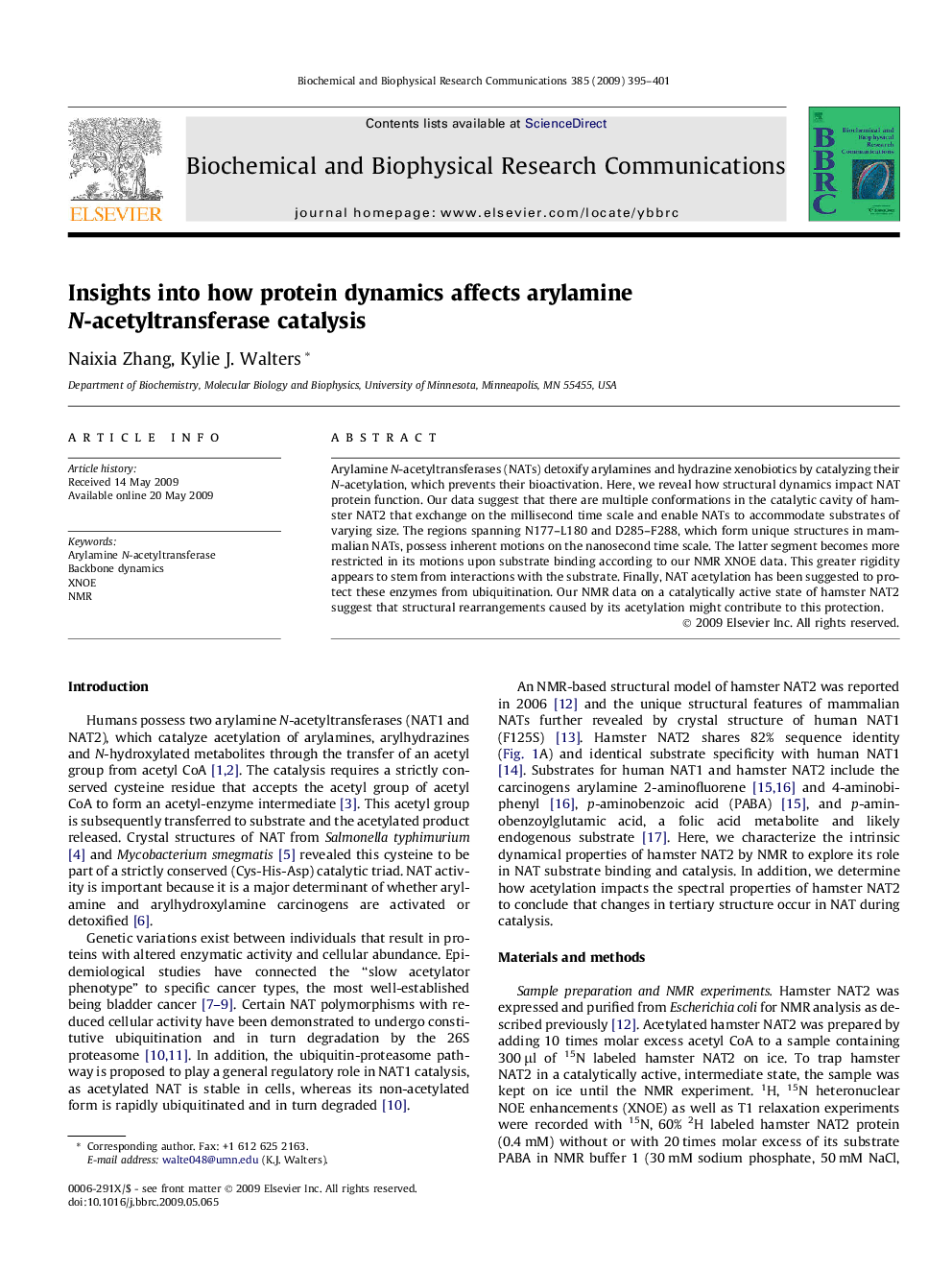| Article ID | Journal | Published Year | Pages | File Type |
|---|---|---|---|---|
| 10765893 | Biochemical and Biophysical Research Communications | 2009 | 7 Pages |
Abstract
Arylamine N-acetyltransferases (NATs) detoxify arylamines and hydrazine xenobiotics by catalyzing their N-acetylation, which prevents their bioactivation. Here, we reveal how structural dynamics impact NAT protein function. Our data suggest that there are multiple conformations in the catalytic cavity of hamster NAT2 that exchange on the millisecond time scale and enable NATs to accommodate substrates of varying size. The regions spanning N177-L180 and D285-F288, which form unique structures in mammalian NATs, possess inherent motions on the nanosecond time scale. The latter segment becomes more restricted in its motions upon substrate binding according to our NMR XNOE data. This greater rigidity appears to stem from interactions with the substrate. Finally, NAT acetylation has been suggested to protect these enzymes from ubiquitination. Our NMR data on a catalytically active state of hamster NAT2 suggest that structural rearrangements caused by its acetylation might contribute to this protection.
Related Topics
Life Sciences
Biochemistry, Genetics and Molecular Biology
Biochemistry
Authors
Naixia Zhang, Kylie J. Walters,
